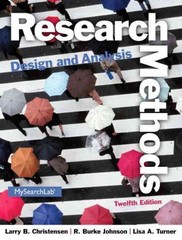


Answer the following questions correctly.,,,
Suppose that 55% of all people prefer Coke to Pepsi. We randomly choose 500 people and ask them if they prefer Coke to Pepsi. What is the probability that our survey will (erroneously) indicate that Pepsi is preferred by more people than Coke? Round your answer to three decimal places, if necessary. Does this probability increase or decrease as we take larger and larger samples? Why? This probability because estimates of the true proportion become accurate as the sample size increases. Suppose the number of points scored by the Indiana University basketball team in one minute follows a Poisson distribution with A = 1.5. In a 10-minute span of time, what is the probability that Indiana University scores exactly 14 points; at most 14 points? [Use the fact that if the rate per minute is A, then the rate in t minutes is At.) Round your answers to three decimal places, if necessary. P(scores exactly 14 points): P{scores at most 14 points): A study has shown that the probability distribution of X, the number of customers in line (including the one being served, if any) at a checkout counter in a department store, is given by P(X = 0): 0.10, P(X = 1): 0.25, P(X = 2): 0.20, P(X = 3): 0.20, and P(X 2 4) = 0.25. Consider a newly arriving customer to the checkout line. Round your answers to two decimal places, if necessary. a. What is the probability that this customer will not have to wait behind anyone? b. What is the probability that this customer will have to wait behind at least one customer? c. On average, the newly arriving customer will have to wait behind how many other customers? Answer with the best approximation possible with the data you are given. Suppose that you draw a single card from a standard deck of 52 playing cards. a. What is the probability that this card is a diamond or club? Select V b. What is the probability that this card is not a 4? Select V c. Given that this card is a black card, what is the probability that it is a spade? Select V d. Let E1 be the event that this card is a black card. Let E2 be the event that this card is a spade. Are E1 and E2 independent events? Why or why not? Round your answers to two decimal places, if necessary. We have P(E1) = , P(E2) = , and P(E1 and 52) = . Because P(E1 and E2) equal to P(E1)*P(E2), then E1 and E2 independent. e. Let E3 be the event that this card is a heart. Let E4 be the event that this card is a 3. Are E3 and E4 independent events? Why or why not? Round your answers to three decimal places, if necessary. We have P(E3) = , P(E4) = , and P(E3 and E4) = . Because P(E3 and E4) equal to P(E3)*P(E4), then E3 and E4 independent













